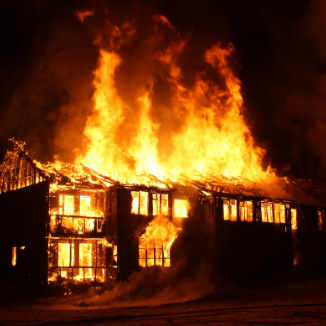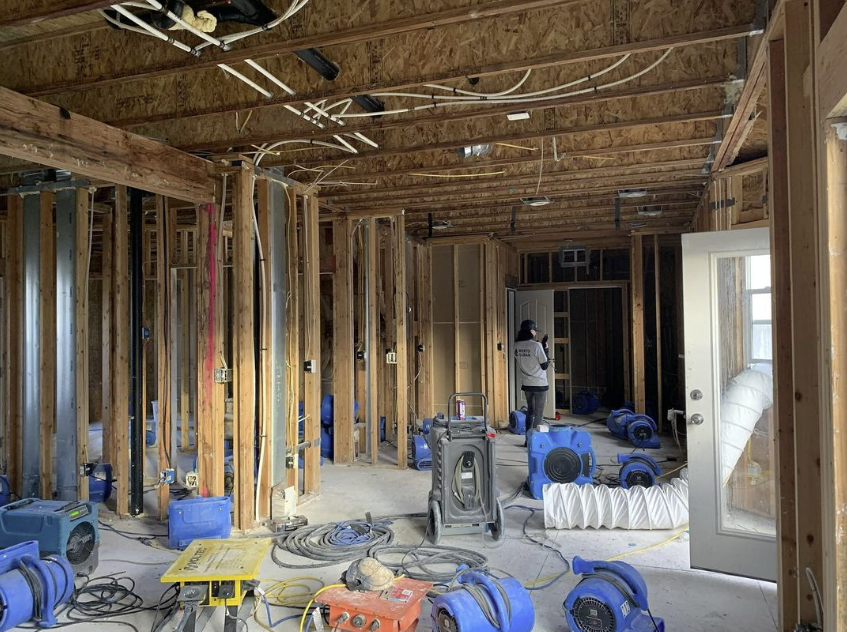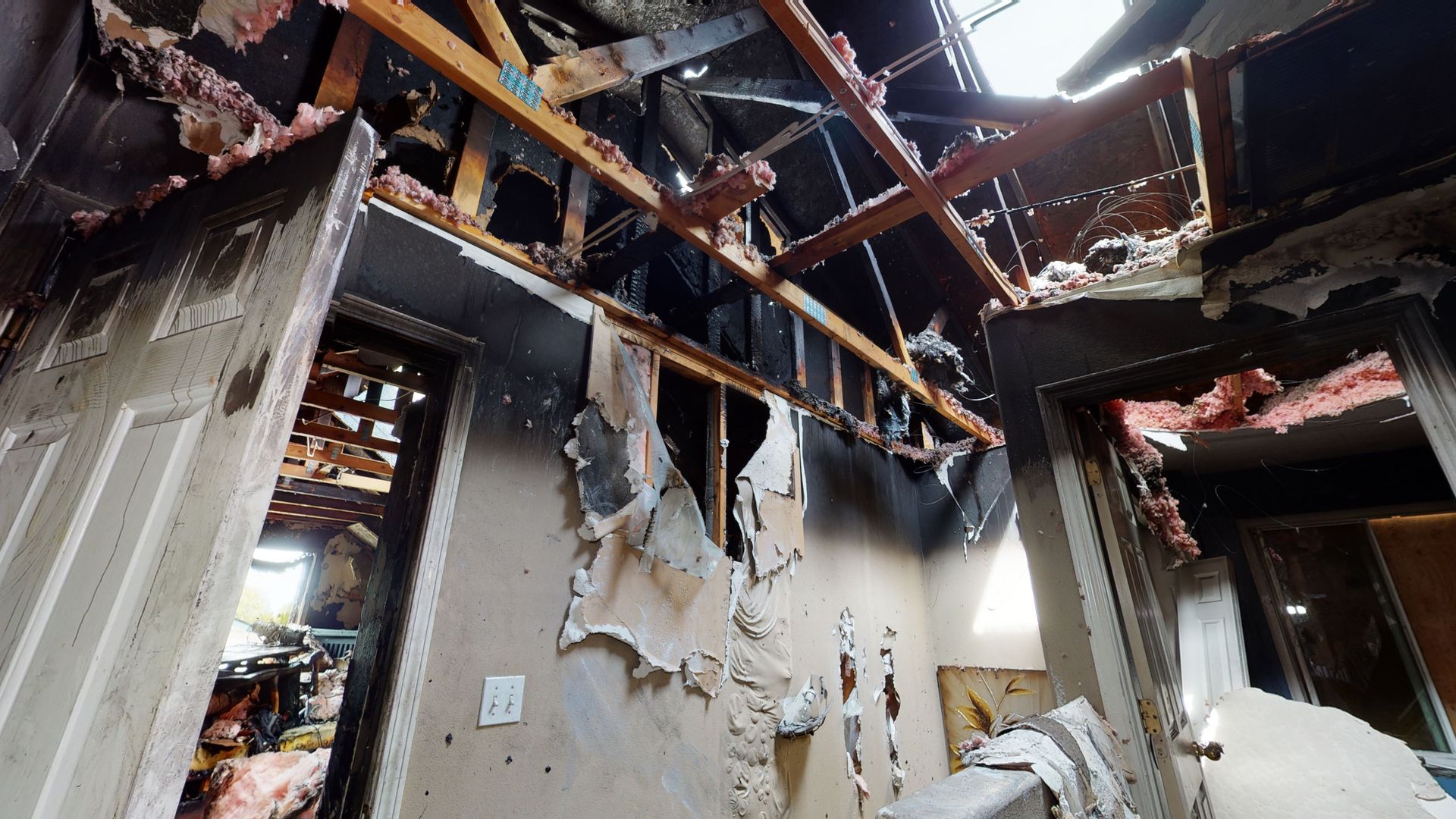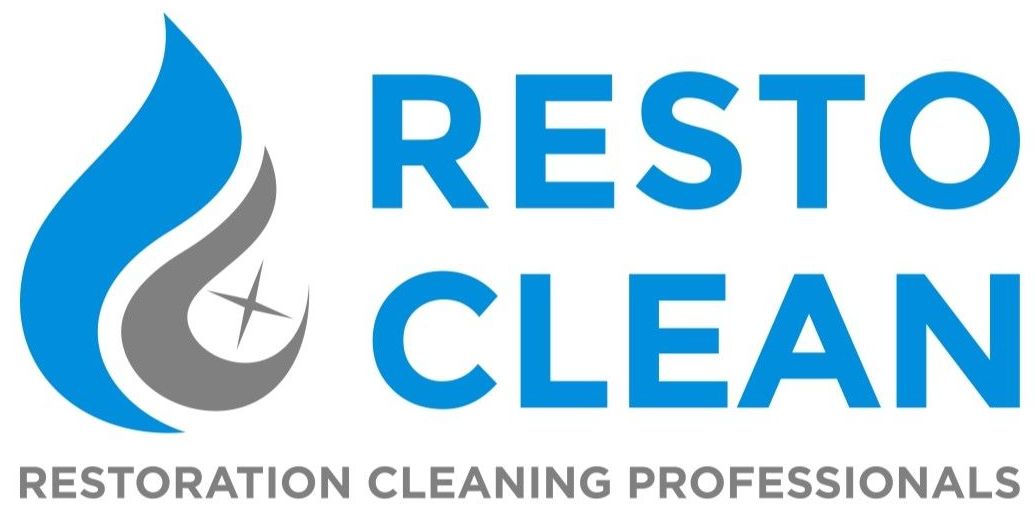Swift Action Required: The Significance of Rapid Water Damage Restoration
Daisy Wick • August 17, 2023
Water, the source of life and vitality, can also become a destructive force when it infiltrates our homes and properties. Whether it's a burst pipe, a leaky roof, or a flood, water damage can wreak havoc on structures, belongings, and your peace of mind. In this comprehensive guide, we'll delve into the crucial importance of swift action when it comes to water damage restoration, and why procrastination can lead to long-term consequences.
Understanding Water Damage and its Impact:
Water damage is more than just visible dampness or soaked carpets. It can penetrate deep into materials, weakening structures, fostering mold growth, and compromising indoor air quality. Left unchecked, water damage can give rise to costly repairs and potential health hazards.
The Urgency of Timely Restoration:
Acting promptly when you discover water damage can save you from a cascade of problems:
Preventing Mold Growth: Mold thrives in damp environments, and it only takes 24-48 hours for mold to start growing. Swift water damage restoration helps curb mold growth, protecting your property and health.
Minimizing Structural Damage: Prolonged exposure to water can weaken wood, corrode metal, and compromise structural integrity. Quick intervention prevents further deterioration and the need for extensive repairs.
Preserving Belongings: From furniture to electronics, water damage can ruin your possessions. Swift restoration efforts can salvage more of your belongings, saving you money and sentimental loss.
Avoiding Health Risks: Standing water can become a breeding ground for bacteria and pathogens. Rapid cleanup mitigates health risks associated with contaminated water.
The Domino Effect of Delay:
Procrastinating water damage restoration can set off a series of unfortunate events:
Escalating Costs: The longer you wait, the more extensive the damage becomes, leading to higher restoration costs.
Mold Takes Hold: Mold growth becomes a major concern, necessitating specialized removal and posing health risks.
Structural Complications: Delay can lead to structural weakening, requiring more invasive repairs and risking safety.
Secondary Damage: Water can seep into hidden spaces, causing unseen damage to insulation, electrical systems, and more.
Swift Water Damage Restoration Steps:
Safety First: Before entering the affected area, ensure your safety by turning off electricity and gas if necessary.
Assessment: Identify the source of water intrusion and assess the extent of damage.
Water Extraction: Use pumps, vacuums, and dehumidifiers to remove excess water.
Drying: Employ industrial fans and dehumidifiers to thoroughly dry the area and prevent mold growth.
Sanitization: Clean and disinfect surfaces to ensure a safe living environment.
Repair and Restoration: Fix structural damage and replace materials that cannot be salvaged.
Conclusion:
When water damage strikes, time is of the essence. Swift water damage restoration can mean the difference between a minor inconvenience and a major crisis. By taking immediate action, you're not only safeguarding your property and possessions but also preserving your peace of mind and the well-being of your loved ones.

By Daisy Wick
•
January 11, 2024
A fire is a devastating event that can leave behind not only physical damage but also emotional scars. When the flames are finally extinguished, the road to recovery begins. It's essential to understand the importance of professional fire damage restoration and learn about effective ways to prevent such disasters in the first place. Why Professional Fire Damage Restoration Matters When a fire engulfs your home, the aftermath can be overwhelming. The consequences go beyond charred walls and burnt belongings; there are hidden dangers that only professionals can manage effectively: Safety: Fire-damaged structures can be unstable, posing a significant risk to anyone attempting to enter. Professional restoration teams are equipped to assess the structural integrity and ensure it's safe to enter the premises. Smoke and Soot: Smoke and soot damage extends far beyond the visible areas. They can penetrate walls, HVAC systems, and even ductwork. Professionals have the tools and expertise to thoroughly clean and deodorize affected areas. Water Damage: Often, firefighting efforts involve significant water usage. This can lead to water damage, mold growth, and further structural issues. Restoration experts can mitigate water damage and prevent mold infestations. Content Restoration: Fire-damaged personal belongings often carry immense sentimental value. Professional restoration services can salvage, clean, and restore items that might otherwise be lost forever. Insurance Claims: Dealing with insurance after a fire can be complex. Restoration professionals can document the damage, provide accurate estimates, and communicate with insurance adjusters to streamline the claims process. Thorough Cleanup: Fire damage is not limited to what's visible. Professionals ensure that hidden hazards and toxins, like asbestos or lead, are properly managed during the restoration process. Preventing Fire Damage: Safety First While professional fire damage restoration is vital after a fire, preventing a fire in the first place is even more crucial. Here are some key steps to minimize the risk of fire: Install Smoke Alarms: Ensure you have working smoke alarms on every level of your home and inside each bedroom. Regularly check and replace batteries. Fire Extinguishers: Place fire extinguishers in key areas like the kitchen, garage, and near heating appliances. Know how to use them. Electrical Safety: Regularly inspect electrical wiring and appliances for signs of wear or damage. Avoid overloading circuits and extension cords. Safe Cooking Practices: Stay vigilant in the kitchen while cooking. Keep flammable materials away from the stove and turn off appliances when not in use. Heating Safety: Maintain heating systems, fireplaces, and chimneys. Keep space heaters at a safe distance from flammable materials. Candle Caution: Use candles with care, keeping them away from curtains and other flammable objects. Smoking Safety: If you smoke, do so outdoors. Use deep, sturdy ashtrays, and ensure cigarettes are fully extinguished. Escape Plan: Develop and practice a fire escape plan with your family. Ensure all members know multiple ways to exit the home. Fire damage can be catastrophic, but with prevention and professional restoration, you can move forward and rebuild your life after a fire. Safety awareness and preparation are your best allies in reducing the risk of such a devastating event.

By Daisy Wick
•
October 9, 2023
Natural disasters can strike at any moment, leaving a trail of destruction in their wake. Hailey, Idaho, a picturesque town nestled in the Wood River Valley, is no stranger to the forces of nature. From wildfires to floods and everything in between, the resilient community of Hailey has faced its fair share of disasters. However, what sets this town apart is its unwavering spirit and the dedicated disaster restoration teams that work tirelessly to restore hope and normalcy to the lives of its residents. In this blog, we'll explore the essential role disaster restoration plays in Hailey and the incredible people who make it happen. The Challenges of Hailey's Disasters Hailey, like many other places, experiences a variety of natural disasters. The Wood River Valley's beauty comes with the risk of wildfires, especially during dry summer months. Flash floods can also pose a significant threat, given the region's proximity to rivers and steep terrain. Additionally, Hailey sits on a fault line, making it susceptible to earthquakes. All these factors make disaster restoration a crucial aspect of life in this community. The Unsung Heroes: Disaster Restoration Teams When disaster strikes, it's the disaster restoration teams that step up as the unsung heroes of Hailey. These dedicated professionals work tirelessly to bring normalcy back to the lives of those affected. Here are some key roles they play: Immediate Response: Disaster restoration teams are often the first responders, arriving at the scene promptly to assess the damage and ensure the safety of residents. Damage Assessment: They conduct thorough assessments to determine the extent of damage caused by disasters, which helps in formulating a restoration plan. Clean-Up and Debris Removal: After a disaster, there's often a significant amount of debris and damage that needs to be cleared. Restoration teams efficiently remove debris and hazardous materials. Structural Repairs: They work on restoring damaged structures, including homes, businesses, and infrastructure, ensuring they meet safety standards. Mold Remediation: In the case of flooding or water damage, mold can become a major issue. Restoration teams handle mold removal to prevent health hazards. Content Restoration: Personal belongings damaged during disasters are often restored, providing comfort and relief to residents. Support and Guidance: Restoration teams provide emotional support and guidance to those affected, helping them navigate the complex process of rebuilding their lives. Local Organizations Making a Difference Several local organizations and businesses in Hailey play pivotal roles in disaster restoration efforts. They collaborate with emergency services and government agencies to ensure a swift and effective response to disasters. These organizations often provide resources, manpower, and expertise, turning their commitment to the community into tangible relief for those in need. The Community's Resilience Hailey's strength lies not only in the dedicated professionals who handle disaster restoration but also in its close-knit community. Residents come together to support one another during challenging times, offering help, shelter, and comfort to those affected. This resilience is a testament to the spirit of Hailey and its determination to rebuild, come what may. Conclusion In the face of adversity, Hailey, Idaho, stands as a shining example of resilience and community strength. With disaster restoration teams and local organizations working hand in hand with the people of Hailey, the town continues to recover and rebuild after each disaster. These unsung heroes restore more than just physical structures; they restore hope, faith, and the promise of a brighter tomorrow for this beautiful Wood River Valley community.

By Daisy Wick
•
February 14, 2023
Disasters can strike at any time, leaving your home or business in a state of destruction. Whether it's a fire, flood, or storm, the damage can be overwhelming and leave you feeling helpless. This is where Resto Clean comes in. Resto Clean is a professional disaster restoration service located in Nampa, Idaho, specializing in restoring properties damaged by natural disasters or other types of emergencies. —------------- Why Choose Resto Clean for Disaster Restoration? When disaster strikes, you want to work with a company that you can trust to get the job done right. Resto Clean is that company. With years of experience in the industry, Resto Clean has the knowledge, skills, and equipment necessary to get your property back to its pre-disaster state. Comprehensive Services: Resto Clean offers a wide range of disaster restoration services, including fire damage restoration, water damage restoration, mold remediation, and storm damage restoration. No matter what type of disaster has affected your property, Resto Clean has the expertise to help. Fast Response Time: In an emergency situation, time is of the essence. Resto Clean understands this, which is why they have a fast response time to help get the restoration process started as soon as possible. They understand that the sooner the restoration process begins, the less the damage will be and the faster the restoration will be completed. Experienced Technicians: Resto Clean is staffed by experienced technicians who have been trained in the latest restoration techniques. These technicians are committed to providing the best possible service to each and every customer, and they are always striving to improve their skills and knowledge in order to better serve the community. Insurance Support: Resto Clean works closely with insurance companies to help make the restoration process as smooth and stress-free as possible. They understand the importance of having insurance coverage in the event of a disaster, and they are here to help you navigate the claims process and ensure that your property is fully restored. Local Business: Resto Clean is a local business, so you can be sure that you are supporting the Nampa, Idaho community when you choose them for your disaster restoration needs. They understand the needs of the local community and are committed to providing the best possible service to each and every customer. —------------ Disasters can be devastating, but with Resto Clean, you can rest assured that your property will be restored to its pre-disaster state. Whether you have suffered fire damage, water damage, mold damage, or storm damage, Resto Clean is here to help. With their fast response time, experienced technicians, insurance support, and commitment to the Nampa, Idaho community, you can be sure that you are in good hands with Resto Clean. So, don't wait any longer, contact Resto Clean today to start the disaster restoration process.



